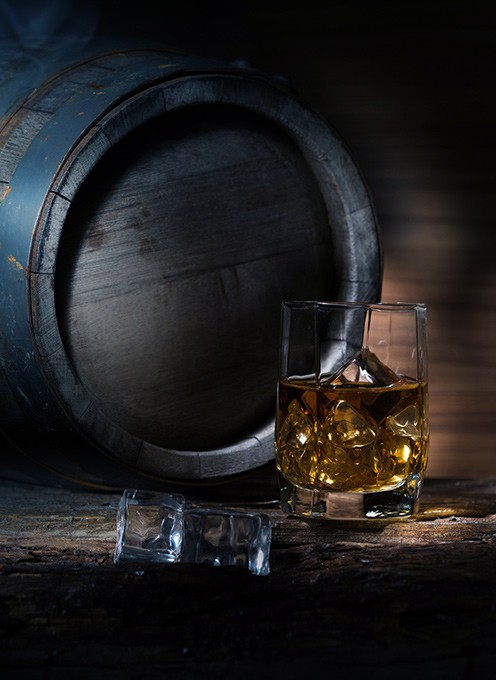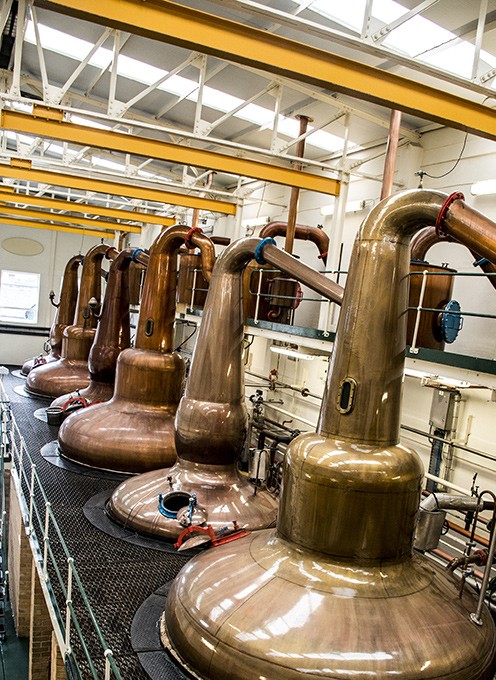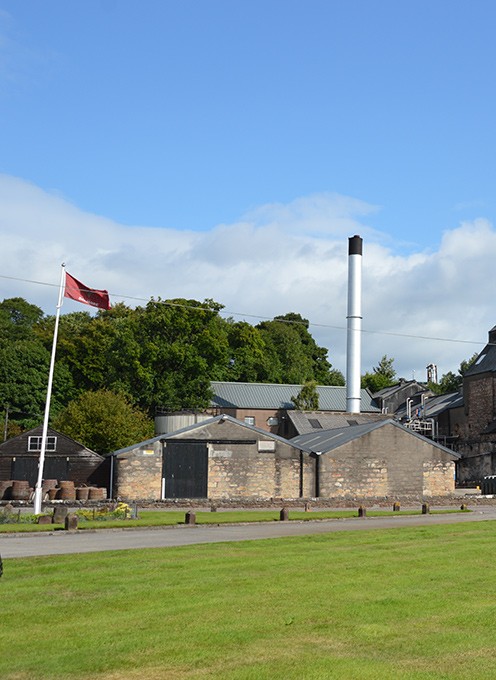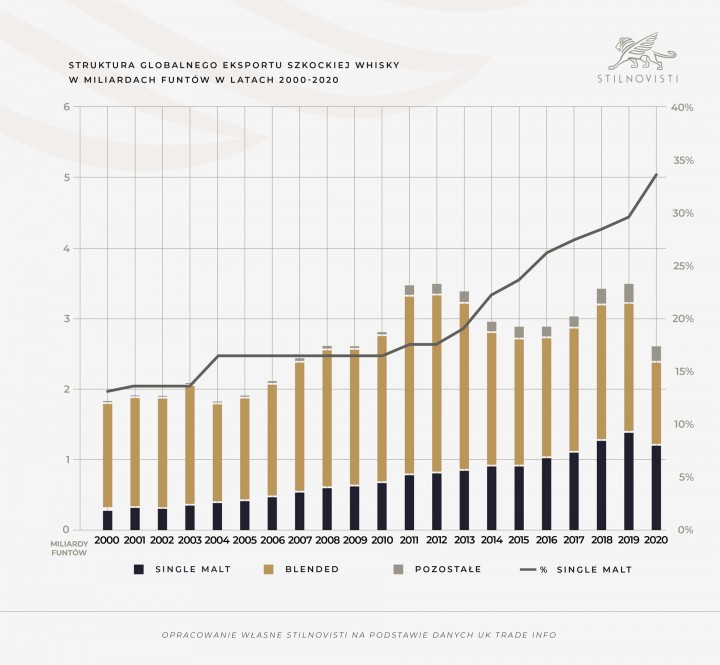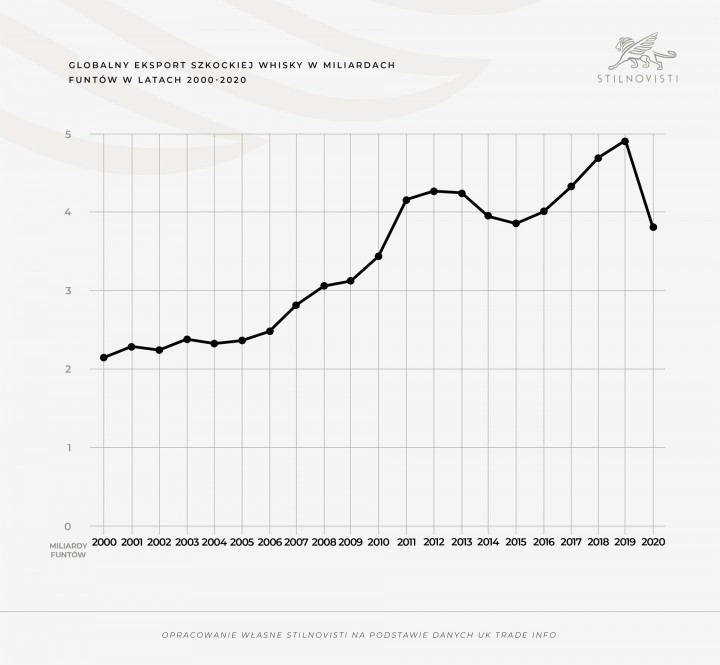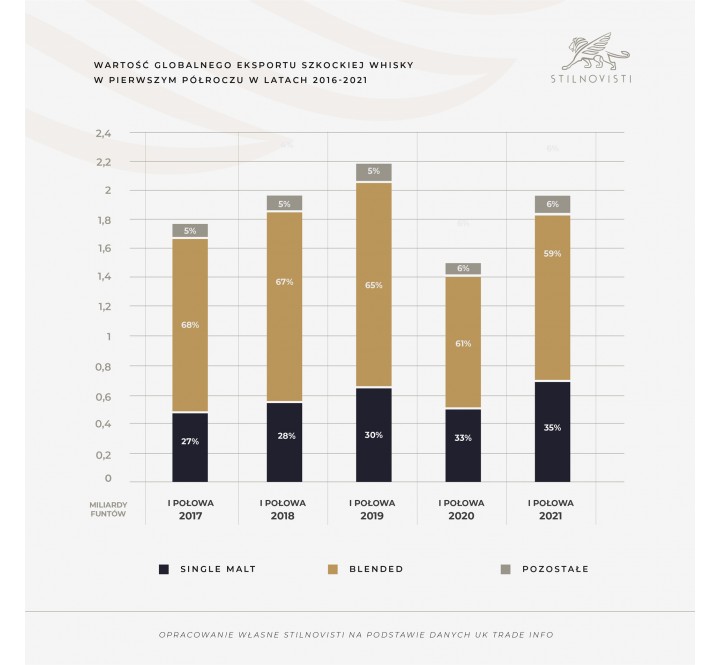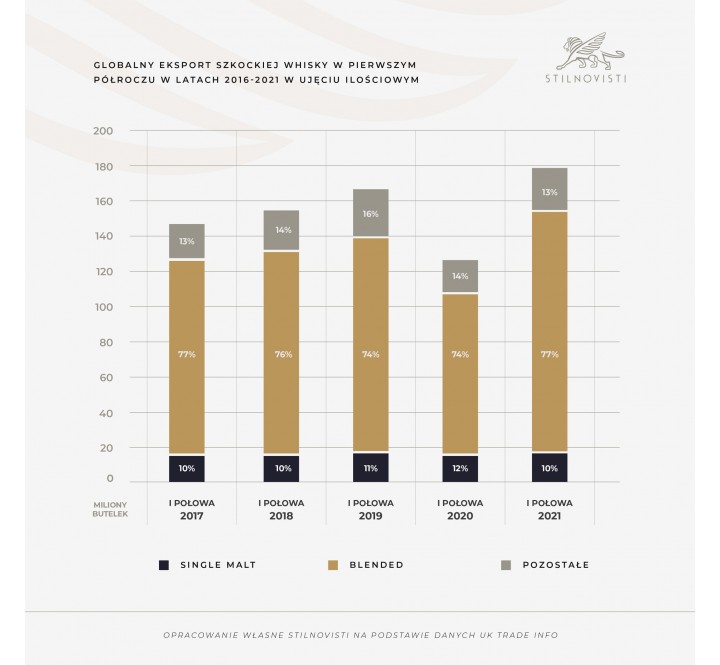Scotch Whisky Market
For years, barrels of Scotch whisky have been enjoying growing popularity among investors in Poland and around the world. Such high interest is influenced by both the situation on the Scottish whisky market and the characteristics of barrels as investment assets.
All available data indicate that the supply of Scotch whisky is not keeping up with the growing demand. Despite the growing number of distilleries and the plans of many whisky producers to increase production, this trend seems to be unthreatened in the long term. Undoubtedly, a growing group of Scotch whisky connoisseurs in Asia, who drive global demand for this drink, have an impact on the market.
In 2006, when Stilnovisti started its operations, Scotch whisky exports were worth £2.5 billion. In 2019, the value of exports reached a record £4.9 billion, which means that the Scotch whisky market almost doubled during this time.
According to data published by the Scotch Whisky Association (SWA), global exports of Scotch whisky fell by over £1.1 billion in 2020, to £3.8 billion.
The value of exports at the lowest level since 2010, and exports fell to 127 out of 179 global markets for Scotch whisky. Such a drastic decline in Scottish whisky exports was primarily due to restrictions related to the coronavirus pandemic, which hit sales very hard at catering outlets and the so-called "travel retail", i.e. boutiques at airports.
Particularly noteworthy is the analysis of the structure of the Scotch whisky market, where the phenomenon of premiumisation is most clearly visible. The share of single malt whisky in the value of global exports is growing very clearly, and 2020 has only accelerated this trend.
While in 2000 only 13% of the value of exported whisky came from the single malt category, in 2010 it was already 17%, while in 2020 the share of the single malt category in the value of global exports amounted to as much as 34%.
The share of blended whisky in the export value structure decreased from 86% in 2000 to 61% in 2020.
Blended whisky remains the cornerstone of the Scottish whisky industry, and in quantitative terms the decline in exports is not that high – the share of blended whisky in the export volume has fallen from 88% to 75% in the last 20 years.
The latest SWA data indicate a recovery in exports in 2021, after a decisive collapse caused by the pandemic, Brexit and harmful import duties on the largest export market – the USA. New data show that Scotch whisky exports increased by 31% in the first half of 2021 compared to the first half of 2020 and amounted to £2.2 billion. The sales volume increased by 42% in the same period and amounted to almost 600 million 0.7l bottles.
According to the latest data from the IWSR Drinks Market Analysis, the global alcoholic beverages market shows "signs of recovery" after the COVID-19 pandemic.
The unprecedented epidemiological situation in the world caused a decline in alcohol sales by 6.2% globally in 2020. The IWSR predicts that by the end of 2021, volume sales will increase by 2.9%, and by 2023, total alcohol sales will return to the level before the pandemic.
Regarding the whisky category, sales fell by 10.7% in 2020, but this category is expected to grow by 5.5% in 2021 and the CAGR in 2021-2025 is expected to be 4.2% . Growth for Scotch whisky is projected at 3.8% annually and is expected to be driven mainly by the return of the travel retail sector as well as the potential opening of the Indian market.
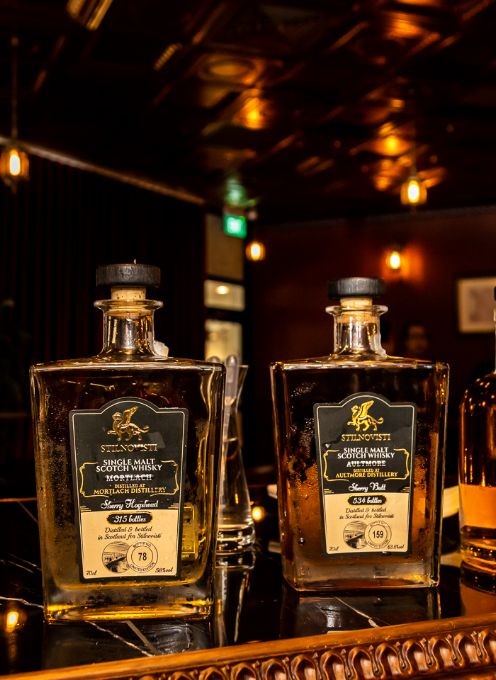
In 2021, a barrel of Macallan whisky from 1991 was auctioned for a record $2.33 million. The content of the barrel corresponded at the time of sale to approx. 600 bottles of whisky at 51.5%. One of the main reasons for such high auction prices are significant deficits of whisky barrels aging over 12 years.
According to the announcements of key distilleries, you should expect to return to bottling whisky, as an edition of 12 years old and older, within the next 5-8 years, as soon as the stocks of whisky are ripe in barrels. The result will be a very significant increase in the prices of 12-year-old and older whisky. We are already observing serious price movements on the example of older whisky, where limited editions in the last 2-3 years have gained on the price in most cases at a minimum of several dozen percent. This trend will translate into the barrel market with a delay of 5-7 years. At the same time, owners of 3-5 year old barrels who treat their portfolios as a long-term deposit of funds will benefit most.

"Taking into account, on the one hand, the current macroeconomic situation and, on the other hand, a very optimistic long-term perspective for the whisky barrel market, we strongly recommend investing in barrels in the longer term. Shortages in the market for older whiskies and huge demand from the Asian market mean that today the equivalent of 3 analogous barrels aged 0 to 3 years must be paid for each 12-year-old barrel. Very large spreads in the price of barrels in favor of older ones are observed, especially between barrels a few years old and several years old, ready to produce expensive spirits. Therefore, we are currently focusing on purchases of barrels aged up to 5 years, i.e. flooded after 2012, and at the same time we recommend our clients to provide investments in freshly flooded barrels with a time horizon of 10-12 years, which will allow for the multiplication of profits from portfolios. Of course, not every barrel will bring the same rate of return. It is worth remembering that in this field it is necessary to have a lot of knowledge about whisky and the factors influencing its quality. When choosing barrels for our Clients, we are supported by an Investment Committee consisting of the greatest authorities of the whisky industry. Thus, we are sure that the goods chosen for our customers are the best choice, guaranteeing the highest possible rate of return, while maintaining full security of ownership."

